Children's & YA Winner |
Illustrated Children's Books |
|
The Word - JL George
|
The Wall – Jessie James/Catalina Echeverri
|
Non Fiction Winner |
Fiction Winner |
|
Dear Damage – Ashley Marie Farmer
|
Where Madness Lies – Sylvia True
|
Poetry & Short Fiction Winner
Moving About the Place: New and Selected Stories by Evelyn Conlon
Children's and YA
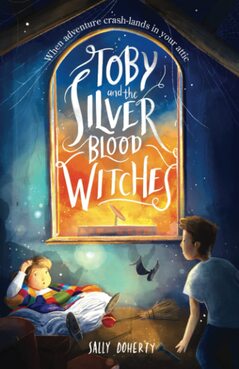
Toby the Silver Blood Witches - Sally Doherty
This is the exciting adventure story of a young boy, Toby, whose life appears to be overwhelmingly difficult until he becomes tangled up with some witches and their quest to save their home. Toby’s mother has a mysterious illness which is never fully explained in the book, but her debilitating exhaustion leads a grown-up reader to understand she has severe ME. This is an unusual book in that it deals with the difficulty young carers have to go through when looking after a parent. Toby is constantly worried he’ll be ‘taken away’, and it’s an interesting insight into the life of a young carer who meets many obstacles in his struggles to keep everything together.
This is the exciting adventure story of a young boy, Toby, whose life appears to be overwhelmingly difficult until he becomes tangled up with some witches and their quest to save their home. Toby’s mother has a mysterious illness which is never fully explained in the book, but her debilitating exhaustion leads a grown-up reader to understand she has severe ME. This is an unusual book in that it deals with the difficulty young carers have to go through when looking after a parent. Toby is constantly worried he’ll be ‘taken away’, and it’s an interesting insight into the life of a young carer who meets many obstacles in his struggles to keep everything together.
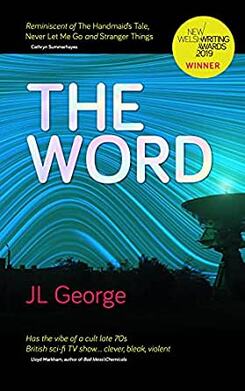
The Word - JL George
The Word is an exciting, well-written and thought-provoking read. Set in a disturbingly relatable dystopian future, the novel follows a group of young people
connected by a new superpower – the ability to compel others to obey them. When they are imprisoned by shady government forces, and undergo experimentation,
they struggle to understand their place in this frightening new world. Their resistance to the authoritarian regime leads to an escape attempt and a series of events which
mount to an exciting climax. The novel’s pacing is excellent right from the beginning and builds tension skilfully whilst never missing a beat. The weaponization of special gifts and attributes is not a new concept in speculative fiction, but the author manages the idea well. Her ideas speak directly to the heart of her YA audience’s natural questioning of authority and their scepticism towards thesometimes jaded society that the older generation has built. George never preaches, but offers finely tuned social commentary. She explores themes of national identity, inequality and fear with sensitivity as she reflects upon issues of the present day in ways that her audience will recognise. She is a skilled world builder, creating a highly visual world with refreshingly light-touch descriptions. The author knows her audience,and her characters are well drawn and ‘real,’ and – as is of paramount importance to the YA audience - her dialogue feels authentic. George is a fresh new voice in YA.
The Word is an exciting, well-written and thought-provoking read. Set in a disturbingly relatable dystopian future, the novel follows a group of young people
connected by a new superpower – the ability to compel others to obey them. When they are imprisoned by shady government forces, and undergo experimentation,
they struggle to understand their place in this frightening new world. Their resistance to the authoritarian regime leads to an escape attempt and a series of events which
mount to an exciting climax. The novel’s pacing is excellent right from the beginning and builds tension skilfully whilst never missing a beat. The weaponization of special gifts and attributes is not a new concept in speculative fiction, but the author manages the idea well. Her ideas speak directly to the heart of her YA audience’s natural questioning of authority and their scepticism towards thesometimes jaded society that the older generation has built. George never preaches, but offers finely tuned social commentary. She explores themes of national identity, inequality and fear with sensitivity as she reflects upon issues of the present day in ways that her audience will recognise. She is a skilled world builder, creating a highly visual world with refreshingly light-touch descriptions. The author knows her audience,and her characters are well drawn and ‘real,’ and – as is of paramount importance to the YA audience - her dialogue feels authentic. George is a fresh new voice in YA.
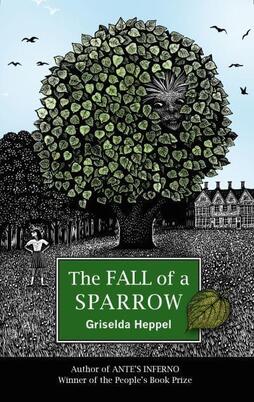
The Fall of the Sparrow - Griselda Heppel
Sent away to boarding school following a mysterious and violent outburst, Eleanor struggles to make friends with the other girls. Eleanor’s family connection to the boarding school leads to her investigation of some mysterious goings-on and eventually bonding with another girl. Her newfound friendship is overshadowed by frequent unexpected encounters with a strange young boy, Davey, who keeps begging Eleanor to play with him. But no one else can see him. Each time she succumbs to his pleas, she is led into increasingly dangerous situations from which she only just escapes unhurt. The family mystery that connects Eleanor and Davey to the school slowly unravels as Eleanor learns more about her own history.
Sent away to boarding school following a mysterious and violent outburst, Eleanor struggles to make friends with the other girls. Eleanor’s family connection to the boarding school leads to her investigation of some mysterious goings-on and eventually bonding with another girl. Her newfound friendship is overshadowed by frequent unexpected encounters with a strange young boy, Davey, who keeps begging Eleanor to play with him. But no one else can see him. Each time she succumbs to his pleas, she is led into increasingly dangerous situations from which she only just escapes unhurt. The family mystery that connects Eleanor and Davey to the school slowly unravels as Eleanor learns more about her own history.

Greencoats - Kate Innes
The novel is set during the Second World War, when Gwen is sent away to stay with her aunt in the countryside after a bomb falls on their Birmingham street. Aunt Eglantine (Tiny) is a delightfully unusual character with a slightly mysterious past, but she willingly invites Gwen into her life and creates a happy escape for her. The mysteries continue when Gwen ventures into the woodlands. A magical element is introduced through spirits within the trees and skilfully woven with the realistic human stories to create a wonderful world which Gwen delights in exploring.
The novel is set during the Second World War, when Gwen is sent away to stay with her aunt in the countryside after a bomb falls on their Birmingham street. Aunt Eglantine (Tiny) is a delightfully unusual character with a slightly mysterious past, but she willingly invites Gwen into her life and creates a happy escape for her. The mysteries continue when Gwen ventures into the woodlands. A magical element is introduced through spirits within the trees and skilfully woven with the realistic human stories to create a wonderful world which Gwen delights in exploring.

Sparrow - Brian Kindall
A young, lonely boy makes a wish upon a star which makes it snow in his home town. But then the snow doesn’t stop, which creates havoc for everyone as they find it increasingly difficult to move around and the town becomes isolated. But for Sparrow, it brings excitement, new friends and a purpose. His mission to save the town leads him to learn about himself and his family history. The theme of the importance of treating nature with respect is handled well without being condescending or sanctimonious. Sparrow and his morose uncle are described with depth and emotional intelligence, although the many absent women in their lives have left a gaping hole. The author manages to create a vivid world with lyrical prose. The tying together of the real world with some imagined additions worked really well, so that the story felt both realistic and dreamlike at the same time.
A young, lonely boy makes a wish upon a star which makes it snow in his home town. But then the snow doesn’t stop, which creates havoc for everyone as they find it increasingly difficult to move around and the town becomes isolated. But for Sparrow, it brings excitement, new friends and a purpose. His mission to save the town leads him to learn about himself and his family history. The theme of the importance of treating nature with respect is handled well without being condescending or sanctimonious. Sparrow and his morose uncle are described with depth and emotional intelligence, although the many absent women in their lives have left a gaping hole. The author manages to create a vivid world with lyrical prose. The tying together of the real world with some imagined additions worked really well, so that the story felt both realistic and dreamlike at the same time.
The Banjax Cluster - Ross Sidebottom
This is an exciting dystopian novel focused on a young boy with Tourette’s who teams up with a group of misfits. Humanity is under extreme threat and the group have to act fast to halt the catastrophic future before them. An interesting and believable predicament has led to machines taking over the world and the group are apparently the only ones who can save the day. They are met with a variety of challenges, from the ridiculous to the slightly more predictable, but there is barely a moment to breathe as they race towards their goal.
This is an exciting dystopian novel focused on a young boy with Tourette’s who teams up with a group of misfits. Humanity is under extreme threat and the group have to act fast to halt the catastrophic future before them. An interesting and believable predicament has led to machines taking over the world and the group are apparently the only ones who can save the day. They are met with a variety of challenges, from the ridiculous to the slightly more predictable, but there is barely a moment to breathe as they race towards their goal.
Illustrated Children's Books

Elephants Don’t Lay Eggs – Jane Schaffer/Rebecca Hodgkinson
When Zoe and her friend Raheem find a strange object behind the bin in her back yard, they decide it must be an elephant’s egg. They ask various people, who don’t take them seriously. But they’re woken in the night by the noise of a huge creature with a long neck and then they find the egg hatching into a baby dinosaur. When they realise that the creature is the mother and she can’t get her baby out of the yard, they go down to unlock the gate. This is a lovely story of friendship and racial harmony between people and animals with delightful illustrations.
When Zoe and her friend Raheem find a strange object behind the bin in her back yard, they decide it must be an elephant’s egg. They ask various people, who don’t take them seriously. But they’re woken in the night by the noise of a huge creature with a long neck and then they find the egg hatching into a baby dinosaur. When they realise that the creature is the mother and she can’t get her baby out of the yard, they go down to unlock the gate. This is a lovely story of friendship and racial harmony between people and animals with delightful illustrations.

Go Away, Foxy Foxy – Karen Hendriks/Naomi Greaves
Three little bunnies decide to spend the night in their treehouse, even though they are afraid that the Foxy Foxy will come and eat them. They have a Mummy bell, with which they can call for help, but they don’t want to use it, so when they hear the Fox coming, they have to find a way to frighten him away. This is a story for young children with cosy illustrations about confronting night-time fears and how to work together to solve a problem.
Three little bunnies decide to spend the night in their treehouse, even though they are afraid that the Foxy Foxy will come and eat them. They have a Mummy bell, with which they can call for help, but they don’t want to use it, so when they hear the Fox coming, they have to find a way to frighten him away. This is a story for young children with cosy illustrations about confronting night-time fears and how to work together to solve a problem.

Great Uncle Stanley – Katherine Lane/Tom Wells
Kevin is an enterprising little boy who is interested in all sorts of things, but his mother is not impressed and constantly tells him he will end up like Great Uncle Stanley. Not unreasonably after hearing his mother’s cautionary tales, Kevin imagines his Great Uncle Stanley with only one hand, a burnt head and squashed by a steamroller. So when Great Uncle Stanley eventually turns up one day, Kevin is first terrified and then astonished to discover that he is perfectly normal. The book is about the frightening power of imagination and the consequences of adults’ careless remarks. It’s very funny and has unusual, strong illustrations.
Kevin is an enterprising little boy who is interested in all sorts of things, but his mother is not impressed and constantly tells him he will end up like Great Uncle Stanley. Not unreasonably after hearing his mother’s cautionary tales, Kevin imagines his Great Uncle Stanley with only one hand, a burnt head and squashed by a steamroller. So when Great Uncle Stanley eventually turns up one day, Kevin is first terrified and then astonished to discover that he is perfectly normal. The book is about the frightening power of imagination and the consequences of adults’ careless remarks. It’s very funny and has unusual, strong illustrations.

Night Lights – Inda Ahmad Zahri/Lesley McGee
This book is set in the tropical world of rural Malaysia told from the point of view of one the five children who live with their parents Tok-Bah and Tok-Mak. The illustrations are vibrant and richly coloured, filling the pages with pictures of their home and village. Exotic plants and wild life burst into life to occupy every space and they include the fireflies and glow worms of the title, which they can only see when their generator breaks down and there’s no other source of light. It’s a charming glimpse of a large happy family and the world they live in.
This book is set in the tropical world of rural Malaysia told from the point of view of one the five children who live with their parents Tok-Bah and Tok-Mak. The illustrations are vibrant and richly coloured, filling the pages with pictures of their home and village. Exotic plants and wild life burst into life to occupy every space and they include the fireflies and glow worms of the title, which they can only see when their generator breaks down and there’s no other source of light. It’s a charming glimpse of a large happy family and the world they live in.
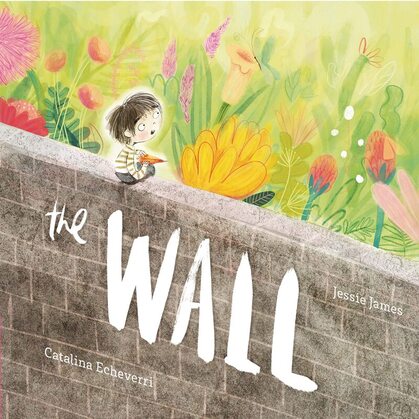
The Wall – Jessie James/Catalina Echeverri
Tom has memories of a world of colour and fun, where reading about the rest of the world fills him with ambitions to travel and explore. But when the people in his community decide that other people are frightening and dangerous, they decide to build a wall to keep them out. Tom’s world shrinks and become boring, depicted by a lack of colour in the illustrations. So Tom decides to climb the wall to see what’s on the other side and finds a world of colour and a friendly little girl who joins him on his side. When she goes to talk to the grown-ups, they realise that she is the same as them, so they knock the wall down. Then everyone becomes friends and Tom finds the wild animals and exciting things he used to dream about. The book illustrates with engaging simplicity the way in which adults put up barriers based on limited knowledge, and how the barriers can become almost impossible to break down. Here they manage it and discover how nice it is to make new friends.
Tom has memories of a world of colour and fun, where reading about the rest of the world fills him with ambitions to travel and explore. But when the people in his community decide that other people are frightening and dangerous, they decide to build a wall to keep them out. Tom’s world shrinks and become boring, depicted by a lack of colour in the illustrations. So Tom decides to climb the wall to see what’s on the other side and finds a world of colour and a friendly little girl who joins him on his side. When she goes to talk to the grown-ups, they realise that she is the same as them, so they knock the wall down. Then everyone becomes friends and Tom finds the wild animals and exciting things he used to dream about. The book illustrates with engaging simplicity the way in which adults put up barriers based on limited knowledge, and how the barriers can become almost impossible to break down. Here they manage it and discover how nice it is to make new friends.

Yoo hoo Mr Crab – Jenny Watt/Christine Cagara
A story about Mr Crab whose quiet, solitary life on the beach is interrupted by the arrival of a pretty blue crab who keeps inviting him to join her and her friends. He doesn’t want to go because he prefers his own company, so each time she turns up, he moves house, digging himself a new hole where he hopes he won’t be found. In the end, he has dug so many holes that the pretty crab and her friends move into them all and he is surrounded. It has become a village. He finally accepts a cup of tea and decides it’s quite pleasant having friends. This is a delightful book about the difficulties and awkwardness of social interaction and the value of friendship.
A story about Mr Crab whose quiet, solitary life on the beach is interrupted by the arrival of a pretty blue crab who keeps inviting him to join her and her friends. He doesn’t want to go because he prefers his own company, so each time she turns up, he moves house, digging himself a new hole where he hopes he won’t be found. In the end, he has dug so many holes that the pretty crab and her friends move into them all and he is surrounded. It has become a village. He finally accepts a cup of tea and decides it’s quite pleasant having friends. This is a delightful book about the difficulties and awkwardness of social interaction and the value of friendship.
Fiction

The Girls from Alexandria – Carol Cooper
Nadia, at the age of seventy, in hospital, drifts in and out of coherent thoughts, struggling to work out why she is there. Even the medical staff seem confused about the reason for her condition. The only thing she can be certain about is that she has a sister who disappeared many decades ago and that she has spent her entire adult life trying to find her. The novel shifts backwards and forwards in time, from her hospital bed in the UK, back to her childhood in Egypt in the 1950s, growing up with her sister Simone in the city of Alexandria, with their parents and the many aunties and servants who were always there. Through her memories - flashes of childhood moments, her marriage to Fouad, an Egyptian doctor, and the trauma of many miscarriages - we piece together Nadia’s life and relationship with her sister until she disappears. Postcards used to arrive every now and again with enigmatic messages that didn’t mean anything. It’s only when a nurse introduces her to the internet that she begins to realise there might be a new way to look for Simone. The novel is packed with the smells, the tastes, the colours and the visual richness of life in Egypt from the 1950s onwards, with all the major political unheavals within the country playing out in the background. The contrast with her drab, lonely hospital bed could not be greater. Cooper clearly knows Egypt well – according to her biographical notes, she grew up there – and she has a natural ability to share her knowledge with us with great skill.
Nadia, at the age of seventy, in hospital, drifts in and out of coherent thoughts, struggling to work out why she is there. Even the medical staff seem confused about the reason for her condition. The only thing she can be certain about is that she has a sister who disappeared many decades ago and that she has spent her entire adult life trying to find her. The novel shifts backwards and forwards in time, from her hospital bed in the UK, back to her childhood in Egypt in the 1950s, growing up with her sister Simone in the city of Alexandria, with their parents and the many aunties and servants who were always there. Through her memories - flashes of childhood moments, her marriage to Fouad, an Egyptian doctor, and the trauma of many miscarriages - we piece together Nadia’s life and relationship with her sister until she disappears. Postcards used to arrive every now and again with enigmatic messages that didn’t mean anything. It’s only when a nurse introduces her to the internet that she begins to realise there might be a new way to look for Simone. The novel is packed with the smells, the tastes, the colours and the visual richness of life in Egypt from the 1950s onwards, with all the major political unheavals within the country playing out in the background. The contrast with her drab, lonely hospital bed could not be greater. Cooper clearly knows Egypt well – according to her biographical notes, she grew up there – and she has a natural ability to share her knowledge with us with great skill.

The Year We Lived – Virginia Crow
This is a well-written historical novel that works on many levels - clear language, realistic characterisation and plenty of action. Detailed knowledge and research are in evidence throughout. The setting is 1074, eight years after the Battle of Hastings, and it concerns a brother and sister, Robert and Edith, who are hiding from the Lord Henry De Bois. When Edith is eventually captured by him she is forced to marry him. She manages to maintain her dignity, but as a result, suffers much at his hands. Her capture sets in motion many terrible events and Robert is compelled to call on loyal friends to join him in his resistance. The writing is intelligent and the plot well-constructed, but it’s only when the novel reaches its satisfactory conclusion that one realises just how clever the author has been. There’s an extraordinary revelation in the last few pages, which compels the reader to go backwards, re-examine the characters and previous events. It soon becomes clear that all the clues have been laid with great expertise and subtlety and that this is a very well constructed novel.
This is a well-written historical novel that works on many levels - clear language, realistic characterisation and plenty of action. Detailed knowledge and research are in evidence throughout. The setting is 1074, eight years after the Battle of Hastings, and it concerns a brother and sister, Robert and Edith, who are hiding from the Lord Henry De Bois. When Edith is eventually captured by him she is forced to marry him. She manages to maintain her dignity, but as a result, suffers much at his hands. Her capture sets in motion many terrible events and Robert is compelled to call on loyal friends to join him in his resistance. The writing is intelligent and the plot well-constructed, but it’s only when the novel reaches its satisfactory conclusion that one realises just how clever the author has been. There’s an extraordinary revelation in the last few pages, which compels the reader to go backwards, re-examine the characters and previous events. It soon becomes clear that all the clues have been laid with great expertise and subtlety and that this is a very well constructed novel.

The Workshop of Filthy Creation – Richard Gadz
When Maria, a young girl, arrives off the boat in London Millwill docks, she almost immediately attracts attention by her remarkably rapid response in saving a toddler who’s about to fall into the river. Professor Hobson, who is there to meet her, hurries her away quickly, aware that her wax-like features and strange demeanor will result in trouble. This is a superbly atmospheric novel, imagined around the next generation after Frankenstein, referencing the history of Mary Shelley’s novel, with Maria as the new creation cloned from a dead body. Gadz’s novel is always convincing and placed authentically in its historical context. The believable, well-drawn characters, even Maria, who forms her own moral pathways, draw us in and earn our interest and sympathy, although some of the more gruesome details are not for the faint-hearted. The plot is intricate, full of action and very exciting with plenty of wonderful set pieces – a sinister secret organisation that has permeated all levels of society, a chase in a horse and carriage through the streets of London and a climax in the British Museum, complete with a giant gorilla.
When Maria, a young girl, arrives off the boat in London Millwill docks, she almost immediately attracts attention by her remarkably rapid response in saving a toddler who’s about to fall into the river. Professor Hobson, who is there to meet her, hurries her away quickly, aware that her wax-like features and strange demeanor will result in trouble. This is a superbly atmospheric novel, imagined around the next generation after Frankenstein, referencing the history of Mary Shelley’s novel, with Maria as the new creation cloned from a dead body. Gadz’s novel is always convincing and placed authentically in its historical context. The believable, well-drawn characters, even Maria, who forms her own moral pathways, draw us in and earn our interest and sympathy, although some of the more gruesome details are not for the faint-hearted. The plot is intricate, full of action and very exciting with plenty of wonderful set pieces – a sinister secret organisation that has permeated all levels of society, a chase in a horse and carriage through the streets of London and a climax in the British Museum, complete with a giant gorilla.
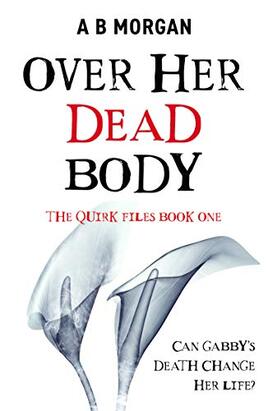
Over Her Dead Body - A B Morgan
Gabriella Dixon’s first warning that there’s something wrong is when a representative of the local council turns up on her doorstep to collect outstanding debt for a funeral. It turns out to be her own funeral. What seems at first to be a simple mistake develops into a much more alarming situation when Gabriella discovers that her death has been registered with all her connections and she has no access to money. The situation escalates and becomes much more sinister until it’s clear that someone has a grudge against her. This is when her solicitor introduces her to Peddyr and Connie Quirk, a couple who run a detective agency. This is an exciting thriller with a very clever and well thought-out plot. It’s full of surprises and – a fast read that’s hard to put down. There are plenty of unpleasant characters, all of whom could be responsible for Gabriella’s dilemma, but Peddyr and Connie, a husband and wife team, make delightfully eccentric detectives, with plenty of ideas and resourcefulness, who nevertheless only catch up with the truth once Gabriella has taken matters into her own hands. The cover tells us this is Book One of the Quirk Files, so it seems there are plenty more thrills in store for the future.
Gabriella Dixon’s first warning that there’s something wrong is when a representative of the local council turns up on her doorstep to collect outstanding debt for a funeral. It turns out to be her own funeral. What seems at first to be a simple mistake develops into a much more alarming situation when Gabriella discovers that her death has been registered with all her connections and she has no access to money. The situation escalates and becomes much more sinister until it’s clear that someone has a grudge against her. This is when her solicitor introduces her to Peddyr and Connie Quirk, a couple who run a detective agency. This is an exciting thriller with a very clever and well thought-out plot. It’s full of surprises and – a fast read that’s hard to put down. There are plenty of unpleasant characters, all of whom could be responsible for Gabriella’s dilemma, but Peddyr and Connie, a husband and wife team, make delightfully eccentric detectives, with plenty of ideas and resourcefulness, who nevertheless only catch up with the truth once Gabriella has taken matters into her own hands. The cover tells us this is Book One of the Quirk Files, so it seems there are plenty more thrills in store for the future.
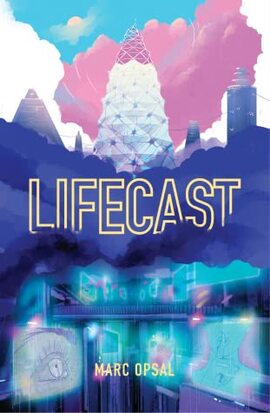
Lifecast – Marc Opsal
This a far future SF novel where the stratification between the elite and the rest is very marked. The technology level is high and it is a kind of cross between The Truman Show and Keeping up with the Kardashians. The LifeIdol has every moment of her life on show to the public. and they want to know everything about her lifestyle - what she eats, drinks, wears, and what she does influences what the public wants. When the current Idol kills herself, she needs to be replaced. The story revolves around Valet Bear - servant/bodyguard to the rich – and Aleks, scion of a wealthy family. Despite their difference in status, they are friends and find ways of circumventing the perpetual tracking that everyone is under. Their relationship is put in jeopardy when Aleks becomes a Nominee to replace the Idol. This is a fast paced thriller with both Bear and Aleks facing danger. The society is shown through the action, introducing background and factual detail with a light touch, resulting in an enjoyable compulsive read.
This a far future SF novel where the stratification between the elite and the rest is very marked. The technology level is high and it is a kind of cross between The Truman Show and Keeping up with the Kardashians. The LifeIdol has every moment of her life on show to the public. and they want to know everything about her lifestyle - what she eats, drinks, wears, and what she does influences what the public wants. When the current Idol kills herself, she needs to be replaced. The story revolves around Valet Bear - servant/bodyguard to the rich – and Aleks, scion of a wealthy family. Despite their difference in status, they are friends and find ways of circumventing the perpetual tracking that everyone is under. Their relationship is put in jeopardy when Aleks becomes a Nominee to replace the Idol. This is a fast paced thriller with both Bear and Aleks facing danger. The society is shown through the action, introducing background and factual detail with a light touch, resulting in an enjoyable compulsive read.
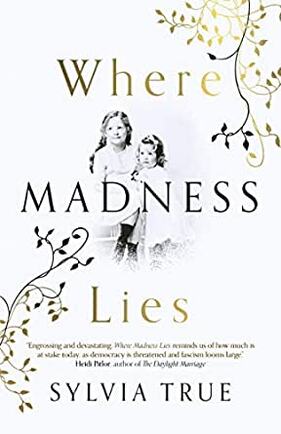
Where Madness Lies – Sylvia True
The madness lies not with those who have mental illness, but with the way in which they are misunderstood and treated. This is the most significant theme of the novel, but it also encompasses so much more: eugenics as practised by Nazi Germany in the 1930s, during Hitler’s rise to power; the hereditary nature of mental illness; the way experts have been groping around in the dark for so long trying to find treatments; families who remain silent about their past and their inability to reveal secrets. The story alternates between Sabine in a psychiatric hospital in the USA in 1984 suffering from extreme anxiety after the birth of her new baby, and Rigmor in Germany in 1934, in a similar condition. She is eventually admitted to Sonnenstein Pyschiatric Hospital. The link between these two women is Inga, a loving, caring sister to Rigmor and later an austere woman who has never revealed how her sister died from a forced sterilisation which was decreed by the Nazi government. She is terrified that the illness has been passed down through the generations. Sylvia True is generous to all of her characters, understanding that people often have few choices: the doctor who is paid to look after Rigmor co-operates with the regime as long as possible, until he discovers the dreadful truth of what’s being done in Sonnenstein; Rigmor’s distant mother, who mistakenly believes that expensive care will cure her daughter; Inga, who is determined to help Sabine, even when she is not wanted, who makes mistakes, accepts them, tries again, and gradually makes small steps forward. Her attempts to humanise the canteen at the hospital with table cloths and flowers shines a light on her own humanity. This is a clever book which offers subtle changes in understanding as it goes along, all the more powerful when the reader realises it is based on True’s own family history.
The madness lies not with those who have mental illness, but with the way in which they are misunderstood and treated. This is the most significant theme of the novel, but it also encompasses so much more: eugenics as practised by Nazi Germany in the 1930s, during Hitler’s rise to power; the hereditary nature of mental illness; the way experts have been groping around in the dark for so long trying to find treatments; families who remain silent about their past and their inability to reveal secrets. The story alternates between Sabine in a psychiatric hospital in the USA in 1984 suffering from extreme anxiety after the birth of her new baby, and Rigmor in Germany in 1934, in a similar condition. She is eventually admitted to Sonnenstein Pyschiatric Hospital. The link between these two women is Inga, a loving, caring sister to Rigmor and later an austere woman who has never revealed how her sister died from a forced sterilisation which was decreed by the Nazi government. She is terrified that the illness has been passed down through the generations. Sylvia True is generous to all of her characters, understanding that people often have few choices: the doctor who is paid to look after Rigmor co-operates with the regime as long as possible, until he discovers the dreadful truth of what’s being done in Sonnenstein; Rigmor’s distant mother, who mistakenly believes that expensive care will cure her daughter; Inga, who is determined to help Sabine, even when she is not wanted, who makes mistakes, accepts them, tries again, and gradually makes small steps forward. Her attempts to humanise the canteen at the hospital with table cloths and flowers shines a light on her own humanity. This is a clever book which offers subtle changes in understanding as it goes along, all the more powerful when the reader realises it is based on True’s own family history.
Non Fiction

The View From Breast Pocket Mountain – Karen Hill Anton
Karen Hill Anton grew up in the black neighbourhood of Washington Heights in New York by a strict, caring father, who instilled many valuable qualitites in his children. Her mother lived in a mental institution from a very young age and the children could only visit her during the spring and summer because they were not allowed into the building and it was too cold outside for the rest of the year. Hill Anton started travelling early, first living in Denmark (where she encountered their enlightened approach towards support for young mothers), then travelling through Europe with her husband and oldest child, finally going overland to Japan, where they settled, had more children and lived a successful life. They lived for a while in a remote farmhouse on Futokoro Yama - Breast Pocket Mountain - with no conveniences, but a "soul-satisfying ' view, and even hosted John Denver for a few days. Later they moved to a city and Karen became a columnist for a Japanese newspaper. This is a fascinating memoir, told with much visual detail, greatly enhanced by family photos.
Karen Hill Anton grew up in the black neighbourhood of Washington Heights in New York by a strict, caring father, who instilled many valuable qualitites in his children. Her mother lived in a mental institution from a very young age and the children could only visit her during the spring and summer because they were not allowed into the building and it was too cold outside for the rest of the year. Hill Anton started travelling early, first living in Denmark (where she encountered their enlightened approach towards support for young mothers), then travelling through Europe with her husband and oldest child, finally going overland to Japan, where they settled, had more children and lived a successful life. They lived for a while in a remote farmhouse on Futokoro Yama - Breast Pocket Mountain - with no conveniences, but a "soul-satisfying ' view, and even hosted John Denver for a few days. Later they moved to a city and Karen became a columnist for a Japanese newspaper. This is a fascinating memoir, told with much visual detail, greatly enhanced by family photos.
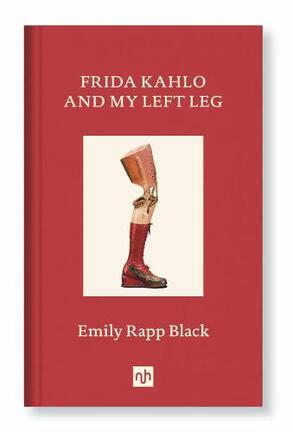
Frida Kahlo and my Left Leg – Emily Rapp Black
Emily Rapp Black lost a leg when she was four, so when, as a schoolgirl, she first encountered the work of Frida Kahlo, the artist, who also lost a leg, she felt an immediate connection. In this fascinating, extremely readable book, Rapp Black examines her own life in relation to Kahlo’s. There are many significant themes that will speak to most women – art, motherhood, pain and love amongst others. Eloquent and refreshingly unsentimental, Rapp Black is also wonderfully versatile. She can give an account of her working life at Victoria’s Secret as a bra fitter – “Every single woman I fitted for a bra confessed to me how much she hated her body” – and follow this with the tragic account of the loss of her baby boy, Ronan. The arrival of a daughter later and Rapp Black’s pleasure in her, infuse the end of the book with joy and hope.
Emily Rapp Black lost a leg when she was four, so when, as a schoolgirl, she first encountered the work of Frida Kahlo, the artist, who also lost a leg, she felt an immediate connection. In this fascinating, extremely readable book, Rapp Black examines her own life in relation to Kahlo’s. There are many significant themes that will speak to most women – art, motherhood, pain and love amongst others. Eloquent and refreshingly unsentimental, Rapp Black is also wonderfully versatile. She can give an account of her working life at Victoria’s Secret as a bra fitter – “Every single woman I fitted for a bra confessed to me how much she hated her body” – and follow this with the tragic account of the loss of her baby boy, Ronan. The arrival of a daughter later and Rapp Black’s pleasure in her, infuse the end of the book with joy and hope.
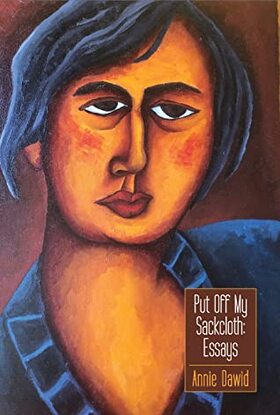
Put Off My Sackcloth – Annie Dawid
This is a collection of twenty-nine excellent essays by Annie Dawid, many of which have been published elsewhere, not following a specific chronology, but slotting together to create a complex jigsaw of her life-story. In the background is a novel she is writing about the Jonestown tragedy, so she continually references her research on the subject and thoughts on the psychology behind it. Alongside this are her observations on the gun culture of America – in one chapter she quotes from the weekly Gun Report in the New York Times, focusing on the extraordinary, horrifying accounts of children killed in gun accidents, debating the meaning of “by accident”. She is refreshingly honest, starting with her own suicidal depression and dipping in and out of the low points of her life before finding a satisfying existence in a rural community in Colorado with her son. Dawid has worked as an English professor in Portland and her essays are sprinkled with her academic expertise, yet her writing remains readable and easily accessible.
This is a collection of twenty-nine excellent essays by Annie Dawid, many of which have been published elsewhere, not following a specific chronology, but slotting together to create a complex jigsaw of her life-story. In the background is a novel she is writing about the Jonestown tragedy, so she continually references her research on the subject and thoughts on the psychology behind it. Alongside this are her observations on the gun culture of America – in one chapter she quotes from the weekly Gun Report in the New York Times, focusing on the extraordinary, horrifying accounts of children killed in gun accidents, debating the meaning of “by accident”. She is refreshingly honest, starting with her own suicidal depression and dipping in and out of the low points of her life before finding a satisfying existence in a rural community in Colorado with her son. Dawid has worked as an English professor in Portland and her essays are sprinkled with her academic expertise, yet her writing remains readable and easily accessible.

Dear Damage – Ashley Marie Farmer
This collection of remarkable essays starts with the account of Farmer’s grandfather, who, two weeks after his wife became paralysed from a small accident, walks into her hospital with a gun, kisses her and shoots her through the chest. When he tries to shoot himself too, the gun breaks, and he’s arrested. With great compassion, Farmer explores the aftermath of this event, through to the trial of her grandfather. Her grandparents are living, breathing people throughout, with stories of their lives and conversations in the form of transcripts. Farmer’s love and grief are finely portrayed and examined with much thoughtful reasoning. In many ways, this is a history of modern America, seen through the eyes of her grandparents, the ethos of family at the heart of everything they do and Farmer’s memories of childhood and growing up. But it’s set against disillusion in the education system and its lack of secure jobs for academics, gun culture and failure of the American dream. Towards the end, Farmer says: “Certainty is a daydream: we’re certain only until something upends our reality to prove that we can’t be certain, that we never could be in the first place.” It’s a pleasure to explore thoughts and analysis from such a fine mind.
This collection of remarkable essays starts with the account of Farmer’s grandfather, who, two weeks after his wife became paralysed from a small accident, walks into her hospital with a gun, kisses her and shoots her through the chest. When he tries to shoot himself too, the gun breaks, and he’s arrested. With great compassion, Farmer explores the aftermath of this event, through to the trial of her grandfather. Her grandparents are living, breathing people throughout, with stories of their lives and conversations in the form of transcripts. Farmer’s love and grief are finely portrayed and examined with much thoughtful reasoning. In many ways, this is a history of modern America, seen through the eyes of her grandparents, the ethos of family at the heart of everything they do and Farmer’s memories of childhood and growing up. But it’s set against disillusion in the education system and its lack of secure jobs for academics, gun culture and failure of the American dream. Towards the end, Farmer says: “Certainty is a daydream: we’re certain only until something upends our reality to prove that we can’t be certain, that we never could be in the first place.” It’s a pleasure to explore thoughts and analysis from such a fine mind.

Too Embarrassed to Sing – Tanya Holt
This is not aimed at professional singers, teachers or music students. It’s a book for everyone, mainly those who have spent their lives wishing they could sing but believing themselves to lack the talent. As Holt points in out in her first chapter, The Myth of Talent, she tells the reader not to compare themselves to professional singers, or even those who haven’t had training and seem to be effortlessly good. It’s all a matter of practice and repetition. She then goes on to examine the way in which we produce sound, including plenty of fun illustrations and useful exercises to help us improve. She knows she is opening a door to a skill which can change lives and her approach is refreshingly accessible.
This is not aimed at professional singers, teachers or music students. It’s a book for everyone, mainly those who have spent their lives wishing they could sing but believing themselves to lack the talent. As Holt points in out in her first chapter, The Myth of Talent, she tells the reader not to compare themselves to professional singers, or even those who haven’t had training and seem to be effortlessly good. It’s all a matter of practice and repetition. She then goes on to examine the way in which we produce sound, including plenty of fun illustrations and useful exercises to help us improve. She knows she is opening a door to a skill which can change lives and her approach is refreshingly accessible.

Your Next Big Idea – Samuel Sanders
This is a book that is, not unexpectedly, filled with ideas and innovative ways of thinking. It’s well set out and easy to access, with plenty of fun exercises and puzzles to encourage you to approach life in a different way. It’s not aimed at any particular group of people, so can be applied by anyone wanting to set up a business, improve their own skills at work, or simply give you new tools to cope with everyday life. The aim is to help the reader to solve problems, but also challenge accepted practices, encouraging new and different ways of thinking.
This is a book that is, not unexpectedly, filled with ideas and innovative ways of thinking. It’s well set out and easy to access, with plenty of fun exercises and puzzles to encourage you to approach life in a different way. It’s not aimed at any particular group of people, so can be applied by anyone wanting to set up a business, improve their own skills at work, or simply give you new tools to cope with everyday life. The aim is to help the reader to solve problems, but also challenge accepted practices, encouraging new and different ways of thinking.

I Shall Not be Away Long – presented by Andrew Tatham
This is an impressively presented collection of letters from Lt Col Charles Bartlett, who served on the Western Front between 1915 and 1917. It includes news reports of the time, many photos and enlightening snippets of information that tell us so much – “The light railway that our rations are pushed up on has been washed away, so what time if any, we shall get our food tonight remains to be seen.” It’s a book you can dip into at any point, read a few letters and be instantly transported to the trenches. It ‘s full of incident - “ We had a party putting out wire in front of our lines and the Germans had the same, neither fired a shot, in fact the Germans shouted ‘if you dont fire we wont’. It’s an awful farce”- and descriptions of officers and people he encounters, including many who get killed shortly after their mention in his letters. Some of the letters are addressed to friends and his daughter, but most are to his wife, so it’s sad to discover at the end that when he came back to England, they separated and later divorced.
This is an impressively presented collection of letters from Lt Col Charles Bartlett, who served on the Western Front between 1915 and 1917. It includes news reports of the time, many photos and enlightening snippets of information that tell us so much – “The light railway that our rations are pushed up on has been washed away, so what time if any, we shall get our food tonight remains to be seen.” It’s a book you can dip into at any point, read a few letters and be instantly transported to the trenches. It ‘s full of incident - “ We had a party putting out wire in front of our lines and the Germans had the same, neither fired a shot, in fact the Germans shouted ‘if you dont fire we wont’. It’s an awful farce”- and descriptions of officers and people he encounters, including many who get killed shortly after their mention in his letters. Some of the letters are addressed to friends and his daughter, but most are to his wife, so it’s sad to discover at the end that when he came back to England, they separated and later divorced.
Poetry & Short Fiction
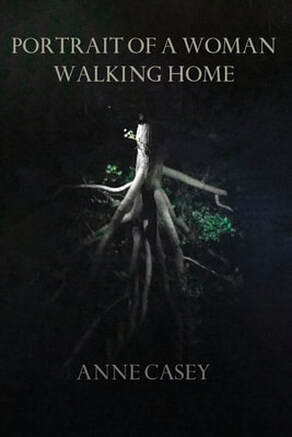
Portrait of a Woman Walking Home - Anne Casey
This is a collection of poems that explore female experiences in a candid and often visceral way. In her reflections on the female orgasm in 'A little death', she exposes 'la petite mort' as a misnomer. The real 'little deaths' are the gynaecological horrors experienced under the surgeon's knife, examined in the sister poem 'A little death ll'. The surgeon tells the speaker to expect 'some pain', but not the agony she actually experiences, and which she perceives as 'a coffin-ship ferrying/a terrible betrayal'. Here, and in many other poems, the speaker feels that she has been betrayed by men, specifically their language, and the patriarchal ideology it reflects. She explores this idea with great skill and we feel its force in poems like ‘Crush’ and ‘Still I rise’, where she rages eloquently about toxic masculinity; the best is probably the title poem, ‘Portrait of a woman walking home’, where she critiques the male gaze, 'wondering why it is we have to watch/ourselves like this'. It’s a powerful poem in a collection that is both linguistically and visually inventive throughout.
This is a collection of poems that explore female experiences in a candid and often visceral way. In her reflections on the female orgasm in 'A little death', she exposes 'la petite mort' as a misnomer. The real 'little deaths' are the gynaecological horrors experienced under the surgeon's knife, examined in the sister poem 'A little death ll'. The surgeon tells the speaker to expect 'some pain', but not the agony she actually experiences, and which she perceives as 'a coffin-ship ferrying/a terrible betrayal'. Here, and in many other poems, the speaker feels that she has been betrayed by men, specifically their language, and the patriarchal ideology it reflects. She explores this idea with great skill and we feel its force in poems like ‘Crush’ and ‘Still I rise’, where she rages eloquently about toxic masculinity; the best is probably the title poem, ‘Portrait of a woman walking home’, where she critiques the male gaze, 'wondering why it is we have to watch/ourselves like this'. It’s a powerful poem in a collection that is both linguistically and visually inventive throughout.

Moving About the Place: New and Selected Stories - Evelyn Conlon
This superb collection covers a range of themes from cultural deracination to female transgression. The opening piece, ‘The Meaning of Missing’, sets the tone with a delightful story of a woman who feels abandoned when her sister leaves for Australia: the journey underscores her own dissatisfaction with life and a sadness that is explored with perfectly pitched humour. Many of Conlon’s characters struggle with the consequences of travel, although some emerge with more dignity than others. Occasionally it's a salutary experience, as with the narrator of ‘Virgin Birth’, who journeys to Hiroshima to meet the first woman to become pregnant after the bombing. On her return she’s learned that some things cannot be expressed directly, which Conlon herself, like the best storytellers, knows very well. Her tales brim with such intriguing characters, from would-be assassins to unruly grandmothers, and all maintain their focus and tension, including the novella length piece that closes the collection. It’s a stunning book from a lyrical and witty writer that deserves a huge audience.
This superb collection covers a range of themes from cultural deracination to female transgression. The opening piece, ‘The Meaning of Missing’, sets the tone with a delightful story of a woman who feels abandoned when her sister leaves for Australia: the journey underscores her own dissatisfaction with life and a sadness that is explored with perfectly pitched humour. Many of Conlon’s characters struggle with the consequences of travel, although some emerge with more dignity than others. Occasionally it's a salutary experience, as with the narrator of ‘Virgin Birth’, who journeys to Hiroshima to meet the first woman to become pregnant after the bombing. On her return she’s learned that some things cannot be expressed directly, which Conlon herself, like the best storytellers, knows very well. Her tales brim with such intriguing characters, from would-be assassins to unruly grandmothers, and all maintain their focus and tension, including the novella length piece that closes the collection. It’s a stunning book from a lyrical and witty writer that deserves a huge audience.
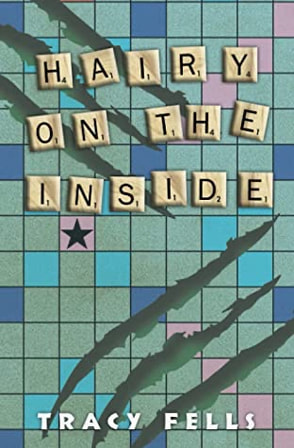
Hairy on the Inside - Tracy Fells
This is an inventive and entertaining novella-in-flashes focusing on a group of monsters cohabiting through the Covid-19 pandemic. The point-of-view character, Chloe, is a werewolf on the lookout for love, possessing a delightful wit that sparkles at the expense of her housemates, not to mention the government whose daily pandemic press briefings feature throughout the linked stories. There are some lovely set pieces, plenty of funny running gags, and a collection of delightfully eccentric characters whose existence as outcasts adds an element of social commentary to the tales. The book is both culturally informed and genre-aware, cleverly exploiting horror conventions to produce astute and often hilarious social satire. I can imagine fans of What We Do In the Shadows queuing up to buy it.
This is an inventive and entertaining novella-in-flashes focusing on a group of monsters cohabiting through the Covid-19 pandemic. The point-of-view character, Chloe, is a werewolf on the lookout for love, possessing a delightful wit that sparkles at the expense of her housemates, not to mention the government whose daily pandemic press briefings feature throughout the linked stories. There are some lovely set pieces, plenty of funny running gags, and a collection of delightfully eccentric characters whose existence as outcasts adds an element of social commentary to the tales. The book is both culturally informed and genre-aware, cleverly exploiting horror conventions to produce astute and often hilarious social satire. I can imagine fans of What We Do In the Shadows queuing up to buy it.
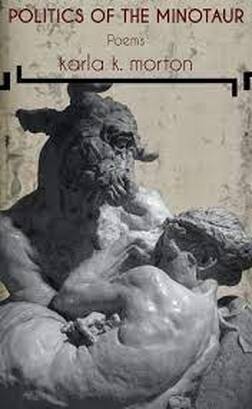
Politics of the Minotaur - Karla K. Morton
This book grips you right from the opening poem, ‘Kindness’, a piece about human connections and their transformative potential in a world of uncertainty and strife. I loved the title poem, ‘Politics of the Minotaur’, which sees the plight of Native Americans through the illuminating lens of myth. There’s wonderful humour in ‘Waffle House’, a poem about a childhood made sweet by ‘menus jewelled with goo’. Morton presents the force of nature as sometimes disruptive, as in poems like ‘Vesuvius’, sometimes joyful and inspirational, and ‘Cicadas’, where ‘bodies, delicate as communion wafers’ have a spiritual dimension as they ‘ascend the branches where they were conceived’ with ‘the magic of hallelujah still inside’. The book teems with thoughtful metaphors and intelligent, perceptive reflections on the world we inhabit.
This book grips you right from the opening poem, ‘Kindness’, a piece about human connections and their transformative potential in a world of uncertainty and strife. I loved the title poem, ‘Politics of the Minotaur’, which sees the plight of Native Americans through the illuminating lens of myth. There’s wonderful humour in ‘Waffle House’, a poem about a childhood made sweet by ‘menus jewelled with goo’. Morton presents the force of nature as sometimes disruptive, as in poems like ‘Vesuvius’, sometimes joyful and inspirational, and ‘Cicadas’, where ‘bodies, delicate as communion wafers’ have a spiritual dimension as they ‘ascend the branches where they were conceived’ with ‘the magic of hallelujah still inside’. The book teems with thoughtful metaphors and intelligent, perceptive reflections on the world we inhabit.

When We Talk of Stolen Sisters: New and Revised Poems - Jessica Mehta
This book offers revised versions of selected earlier material, together with new work. Among other things, the poems explore race and gender, as with the title poem which probes the problematic relationship between state, identity and agency. Many poems are politically engaged, often animated by justifiable anger at the treatment of minority groups in the States (see work like ‘Bad Indian’), but there are frequent moments of tenderness and personal epiphany too. Poems such as ‘Dawn and Death in Stratford’ are particularly enjoyable, where the speaker cradles a dead pigeon, “his heat heavy in my palms all the way to daylight”, or the lovely poem about the night her pet didn’t die, ‘Thanksgiving at Midnight in the Emergency Vet Clinic’ - both show a pleasing ability to render significant moments in an original way.
This book offers revised versions of selected earlier material, together with new work. Among other things, the poems explore race and gender, as with the title poem which probes the problematic relationship between state, identity and agency. Many poems are politically engaged, often animated by justifiable anger at the treatment of minority groups in the States (see work like ‘Bad Indian’), but there are frequent moments of tenderness and personal epiphany too. Poems such as ‘Dawn and Death in Stratford’ are particularly enjoyable, where the speaker cradles a dead pigeon, “his heat heavy in my palms all the way to daylight”, or the lovely poem about the night her pet didn’t die, ‘Thanksgiving at Midnight in the Emergency Vet Clinic’ - both show a pleasing ability to render significant moments in an original way.

Alchemy - Fiona Perry
As the title suggests, this book is about transformations, both real and imagined. The inevitable transformations of age are explored in poems like ‘Memory Box’, where a life is unpacked via a series of significant objects, all having transformative powers of their own. In ‘Panthera’, a panther becomes ‘shadow incarnate’ in the memory of a child who once observed it in Dublin Zoo. Bodies are transformed in Intensive Care, where a mother and daughter swim free of the hospital to merge in a beautiful, symbolic image of their deep connection. Transformations, whether welcome or unwelcome, are an inevitable fact of life for Perry, as she makes clear in ‘Postpartum’, where the speaker feels that ‘everything is unfastening’ in inexplicable and frightening ways, but realises that she 'must be patient/occupy this hinterland and allow the stars to realign'. Perry's world is mutable and unruly, but all we can do is observe and wonder at its weirdness, sadness, and beauty.
As the title suggests, this book is about transformations, both real and imagined. The inevitable transformations of age are explored in poems like ‘Memory Box’, where a life is unpacked via a series of significant objects, all having transformative powers of their own. In ‘Panthera’, a panther becomes ‘shadow incarnate’ in the memory of a child who once observed it in Dublin Zoo. Bodies are transformed in Intensive Care, where a mother and daughter swim free of the hospital to merge in a beautiful, symbolic image of their deep connection. Transformations, whether welcome or unwelcome, are an inevitable fact of life for Perry, as she makes clear in ‘Postpartum’, where the speaker feels that ‘everything is unfastening’ in inexplicable and frightening ways, but realises that she 'must be patient/occupy this hinterland and allow the stars to realign'. Perry's world is mutable and unruly, but all we can do is observe and wonder at its weirdness, sadness, and beauty.


